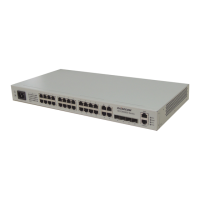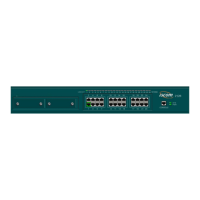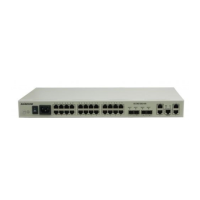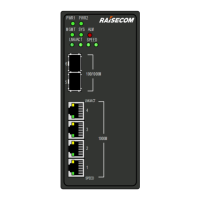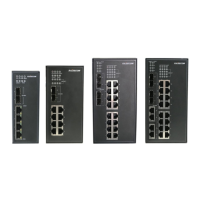Raisecom
ISCOM2600G-HI (A) Series Configuration Guide
Raisecom Proprietary and Confidential
Copyright © Raisecom Technology Co., Ltd.
or discards the packet if the VLAN ID is not in the list of VLANs of which packets are
allowed to pass by the interface.
2.2.2 Preparing for configurations
Scenario
The main function of VLAN is to partition logic network segments. There are 2 typical
application modes:
One kind is that in a small LAN several VLANs are created on a device, the hosts that
connect to the device are divided by VLAN. So hosts in the same VLAN can
communicate, but hosts between different VLANs cannot communicate. For example,
the financial department needs to be separated from other departments and they cannot
access each other. Generally, the interface to connect host is in Access mode.
The other kind is that in bigger LAN or enterprise network multiple devices connect to
multiple hosts and the devices are cascaded, and data packets carry VLAN Tag for
forwarding. The interfaces in the same VLAN on multiple devices can communicate, but
the interfaces in different VLANs cannot communicate. This mode is used in enterprise
that has many employees and needs a large number of hosts, in the same department but
different position, the hosts in one department can access one another, so users have to
partition VLANs on multiple devices. Layer 3 devices, such as routers, are required if
users want to communicate among different VLANs. The cascaded interfaces among
devices are configured in Trunk mode.
When configuring the IP address for VLAN, you can associate a Layer 3 interface for it. Each
Layer 3 interface corresponds to one IP address and one VLAN.
Prerequisite
N/A
2.2.3 Default configurations of VLAN
Default configurations of VLAN are as below.
Active status of static VLAN
Native VLAN of Trunk interface
Allowable VLAN in Trunk mode
Allowable untagged VLAN in Trunk mode

